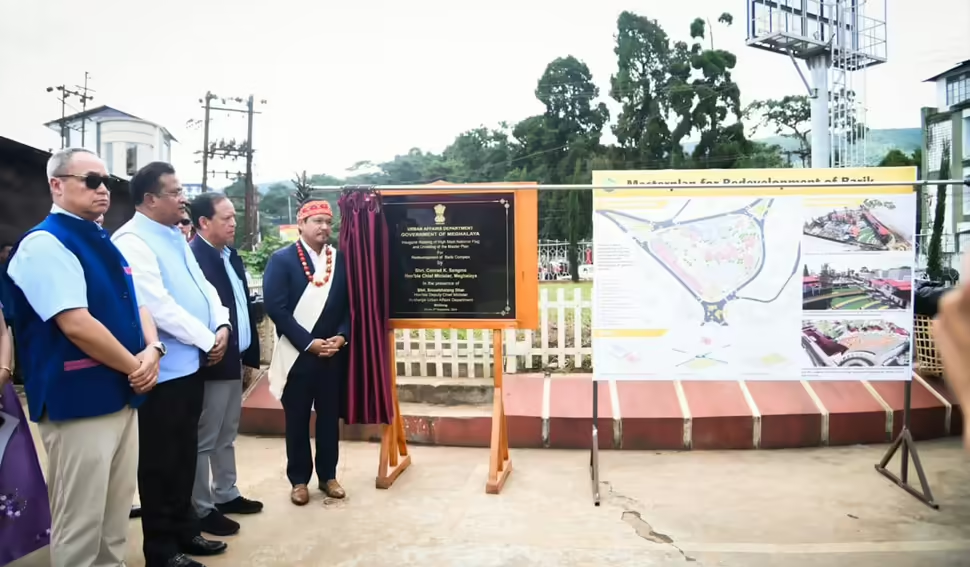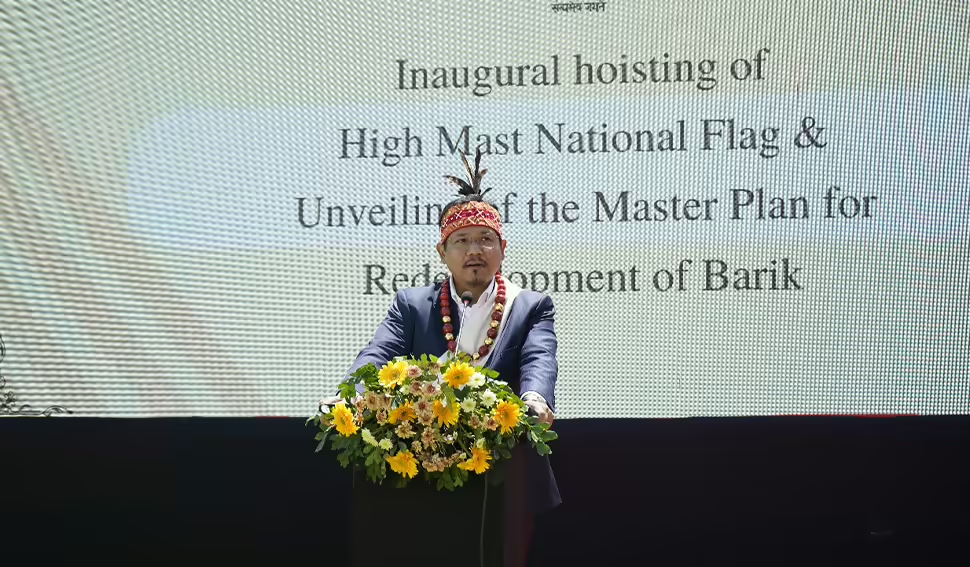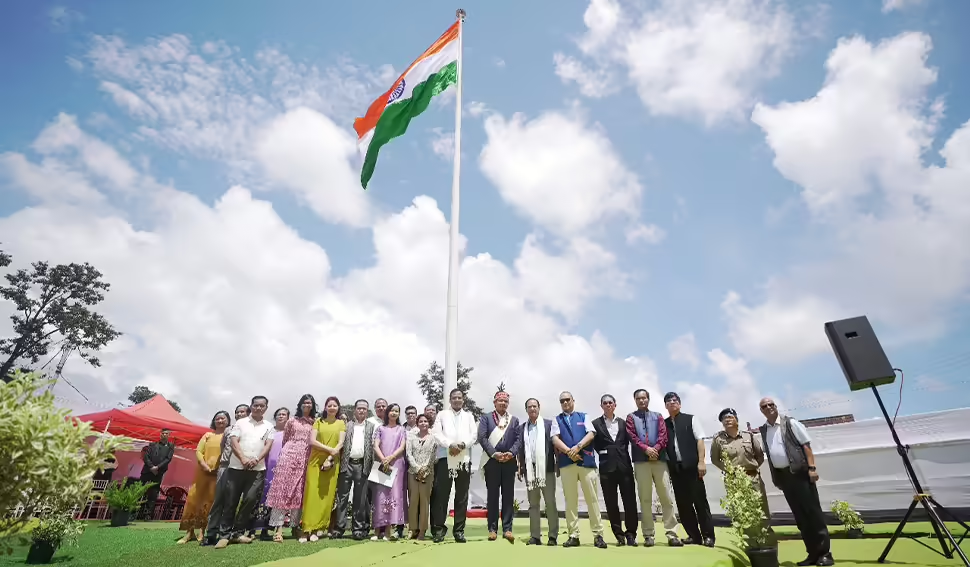Meghalaya CM hoists high mast national flag at Barik, unveils master plan for its redevelopment

Chief Minister Conrad K Sangma on Tuesday hoisted the high mast national flag and unveiled the Master Plan for the redevelopment of Barik Complex into a unity park, under the aegis of the Urban Affairs Department, Government of Meghalaya, here at PWD complex, Barik, Shillong.
Speaking on the occasion, Sangma said, “Today marks a historic moment, as we hoist the high mast national flag and unveil the master plan for the redevelopment of Barik complex”. The project aims to beautify and make Shillong a greener city, with an estimated cost of approximately Rs 25 crores. The work is expected to commence by October or November this year, he informed.

The Chief Minister emphasised that the project will be developed keeping in mind the sensitivity of the people and society, ensuring minimal intervention and preserving the legacy and history of 9 heritage buildings. This Unity Park will symbolise the unity of the state and country, featuring representations of different cultures and tribes, including Khasi, Pnar, Garo, Bodos and other communities in the State, he said.
The park will also display art symbolising various cultures and communities, including cultures of other stats’s as well.
Sangma also said that the park will serve as a reminder of the unity among the people of the state and the country. He commended the cooperation between the Urban Affairs Department and the Public Work Department involved in this iconic project.
The Chief Minister also announced plans for more projects to transform the entire Shillong city, expecting significant completion within the next 12 months. He reiterated the importance of unity, citing the history of the state’s tribes coming together to attain statehood and hoping that the Unity Park will serve as a reminder of the need for unity today and in the future.
Addressing the gathering, Chief Secretary DP Wahlang noted that the high mast national flag is probably one of the tallest and largest in the North East region. He highlighted that the initiative to retransform the Barik complex has been in the planning stages for a long time but has finally come to fruition under the present Government’s vision.

The Chief Secretary praised the government’s approach of not only being aggressive but also sensitive, ensuring the protection of heritage buildings, which will now serve as iconic landmarks with a purpose. He added that this project aims to reduce traffic congestion in the entire city, showcasing the government’s commitment to balancing progress with preservation.
The unveiling of the plan to redevelop Barik complex depicts the Government’s vision for Shillong to alleviate congestion in the core city, foster open spaces, enhance residents’ quality of life, and establish pedestrian-friendly areas and recreational spaces for children. It may be mentioned that the PWD complex at Barik is planned to be redeveloped into an iconic public space that will celebrate cultural heritage, provide a rich experience for tourists, and serve as a social gathering place for residents. This ambitious project will create a sprawling 3.5 acres of open space, marking the first large, planned open area for citizens in the state.
A monumental national flag is 100% Polyester Cloth and stands at a height of 40 meters, with a size of 45 feet by 30 feet adhering to all protocols specified in the Flag Code of India. Beyond initial considerations such as flagpole height and visibility, additional technical factors such as the weight of the flag, materials used, and resistance to wind speed have been addressed with specialized expertise.

The project, with an estimated cost of Rs 25 crore, includes several key components. These include a pedestrian plaza, an open ground, the high mast national flag, an open exhibition area, a taxi terminal and parking and a moving lane, private vehicle parking, a food court, a children’s play area, and the adaptive reuse of 9 identified heritage buildings into tourist information centres, souvenir shops, cafes, galleries, and workshops.
Notably, the project involves the transformation and restoration of 9 heritage buildings, over 100 years old, currently housing PWD offices. With the expertise of INTACH (Indian National Trust for Art and Cultural Heritage), these buildings will be repurposed into Tourist information centre, Souvenir shops, Cafes, Galleries, and workshops. INTACH has identified one Grade 1 building (of national or historical importance) and eight Grade 2 buildings (of regional or local importance) in the compound. The proposed redevelopment plan conserves and repurposes these buildings for adaptive reuse.




Leave a Reply